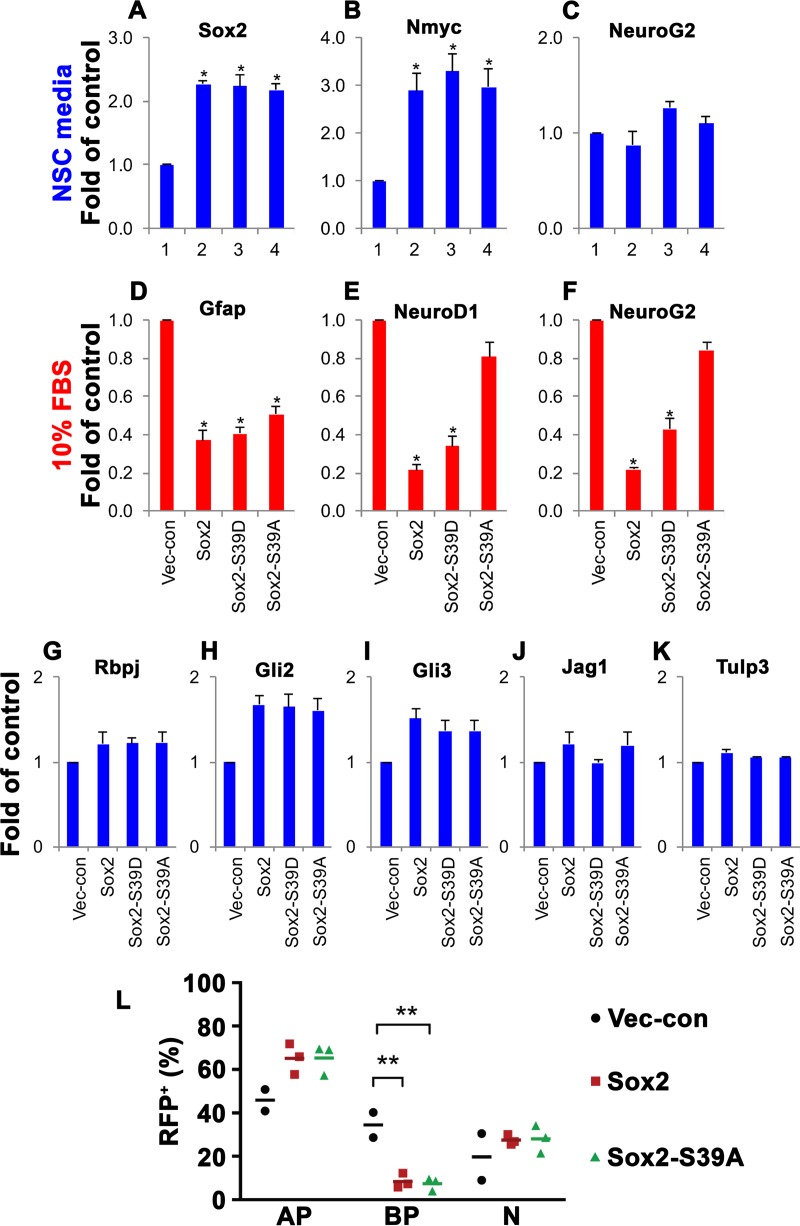FIG 2.
Phosphorylated Sox2 inhibits neuronal differentiation. (A to C) qPCR analysis of the mRNA expression levels of Sox2 (A), Nmyc (B), and NeuroG2 (C) in NSCs overexpressing full-length Sox2 or its mutants (S39D or S39A) under self-renewing conditions, where proliferation is dominant. Each bar represents the average fold change compared to vector control (n = 2 to 4) after normalization to β-actin, Hsp90, and cyclophilin A expression. *, P < 0.05. (D to F) qPCR analysis of the mRNA expression levels of Gfap (D), NeuroD1 (E), and NeuroG2 (F) in NSCs overexpressing full-length Sox2 or its mutants (S39D or S39A) and differentiated with 10% FBS for 6 days. Each bar represents the average fold change compared to vector control (n = 2 or 3) after normalization to β-actin, Hsp90, and cyclophilin A expression. *, P < 0.05. (G to K) qPCR analysis of the expression levels of Rbpj (G), Gli2 (H), Gli3 (I), Jag1 (J), and Tulp3 (K) in NSCs overexpressing full-length Sox2 or its mutants (S39D or S39A). Each bar represents the average fold change compared to vector control (n = 3) after normalization to β-actin, Hsp90, and cyclophilin A expression. (L) In vivo mouse embryo electroporation of full-length Sox2, full-length Sox2-S39A, and control (RFP) as shown in Fig. 7G to J. AP, apical progenitor; BP, basal progenitor; N, neuron.

